Keeping up with and adapting to the current trends can be tricky, but it is vital in our ever-changing society to remain relevant and productive. For those who are still trying to get their heads around Web 3.0 and wondering what all the fuss is about, we've put together a fascinating update on internet development and the next web phase to help you understand.
The whole thing started last month when Twitter founder Jack Dorsey took to his Twitter and wrote, “this will likely be our most important contribution to the internet. proud of the team,” accompanied by the hashtag #web5. This was a quote to another tweet from Dorsey’s TBD—the Bitcoin business unit of Block, which unveiled the concept with an attached Google Docs document containing slides with more information for public viewing.
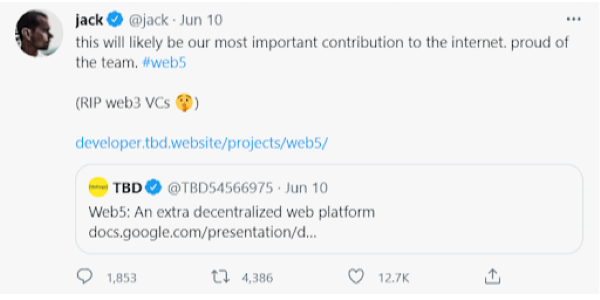
This was, however, not the first news of this development; TBD had previously announced its plan to build a decentralized layer on the internet called “Web5” during the Consensus Festival, which was hosted in Austin, Texas, by cryptocurrency news agency, CoinDesk. In a statement to CoinDesk at the event, TBD said, “Identity and personal data have become the property of third parties. Web5 brings decentralized identity and data storage to individuals’ applications. It lets devs focus on creating delightful user experiences while returning ownership of data and identity to individuals.” The platform's launch date is still yet to be announced, seeing as it is still in open-source development.
You're probably thinking along the same lines that I did when I first read this statement. “Decentralization” and “individual ownership of data” sound like what the developing web 3.0 was supposed to bring to the web, so what exactly is this new web phase?
What is Web 5.0?
To better understand the concept, let’s do a brief on web 1.0, web 2.0, and web 3.0.
Web 1.0 was the first generation of the web, also known as the "read-only" web, and consisted of static web pages that served only informational purposes.
Web 2.0 is the “read-write” web that led to the creation of the social web, allowing users to communicate with servers and other users.
Web 3.0 refers to the "read-write-execute" web; a developing phase focused on web decentralization via blockchain technology, artificial intelligence, and machine learning.
Web 5.0 is an “extra” decentralized web that is being built with the aim of allowing users fully own their data and control their identity. With web 5.0, individual developers will be able to create decentralized web apps with verified credentials and decentralized web nodes using a decentralized web platform. The web, when fully developed will be characterized by two main elements; Data ownership and identity control.
Data Ownership
This web phase will allow individuals to store their data on a decentralized web node rather than centralized corporations or third-party applications, giving the user complete control over personal data access or denial by applications. Allowing access allows this stored data to be used to provide settings and preferences to the app, resulting in personalized web experiences across applications.
Identity Control
Another use case is that user data, such as preferences, settings, and items, as well as identity data, such as name, personal contact information, pictures, gender, and nationality, will be safely stored and managed in a digital wallet, which the user can authorize for connections with other devices and applications to maintain a consistent web identity.
The combination of these two characteristics will result in a combination of web 2.0 and web 3.0 to create a read-write-execute-emotive or read-write-execute-symbiotic web that employs emerging technology such as Bitcoin blockchain, artificial intelligence, and machine learning to create an internet that can interpret metadata using 'emotion' and logic. This interpretation can then be used to make precise predictions and recommendations tailored to the user's needs and requirements.
Web 5.0 vs. Web 3.0
If you don't look too closely, Jack Dorsey's version of web 5.0 looks a lot like web 3.0. This is because Dorsey has not been silent in his disapproval of VCs—Venture Capitals who organize funding rounds for dApps and web3 projects. He holds the opinion that the current web3 model is a faux or partial decentralization, with VCs retaining significant control over user data.
This opinion was reiterated in his response to a Twitter user who asked if web3 was not decentralized enough that there would be a need for web5. “it’s basis on single point of failure systems (eth, solano, *) and lies being told to people about who owns and controls it,” Dorsey responded. He also added “RIP web3 VCs” to his tweet that announced web5. As a result, when web 5.0 becomes operational, it will bring total decentralization, with no intermediaries or centralized bodies having access to or control over a user's data.
While this type of attack on blockchains like Eth and Sol is odd given that Jack sold his tweet as an NFT, a web3 concept, it isn't entirely out of character for a bitcoiner like Dorsey, who believes in Bitcoin's legitimacy and supremacy as the leading financial and web solution, thus the development of web5 on the Bitcoin blockchain. This position was echoed by TBD lead Mike Brock who tweeted “Let me clear this up right now, everybody: No. There are no tokens to invest in with web5.”
Another distinction is that, in comparison to web 3.0, web 5.0 will be more individual-focused and user-centered. The new web will be able to use developing web technology and blockchain to respond to users' specific needs, resulting in new and unique web experiences that vary from person to person, and users will be able to utilize their digital wallet to move between apps.
Read Also: Binance vs. Kraken: Which is superior?
Where do we go from here?
The web phase is still in its early stages, with development well underway, and the final product, scope, and adoption remain largely unknown. The announcement elicited a range of reactions, some positive and some negative. Is web 5.0 just a cheap attempt to keep Bitcoin relevant in the developing web? A marketing buzzword with the same application as existing web phases? Or is it a necessary development aimed at internet advancement and customer satisfaction? I suppose time will tell, and we will as well.
Storing your cryptocurrencies in online wallets, exchanges and software wallets exposes you to risks of being hacked. Consider storing them in a hardware wallet today

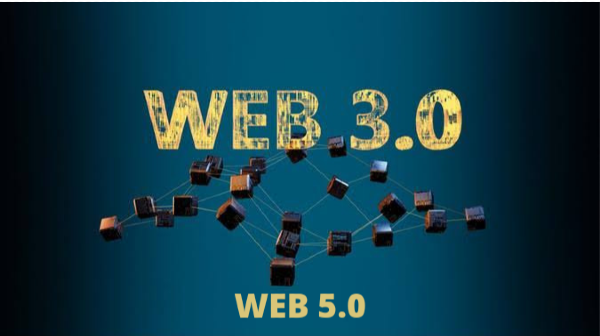

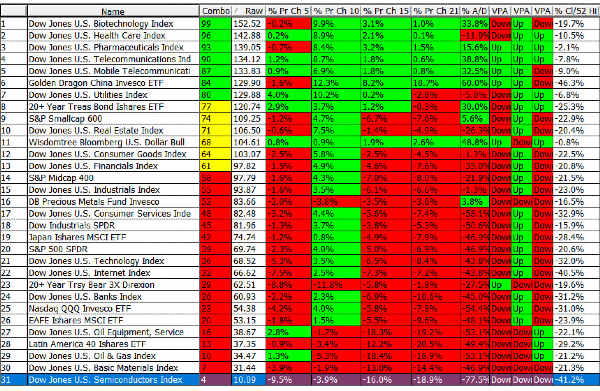
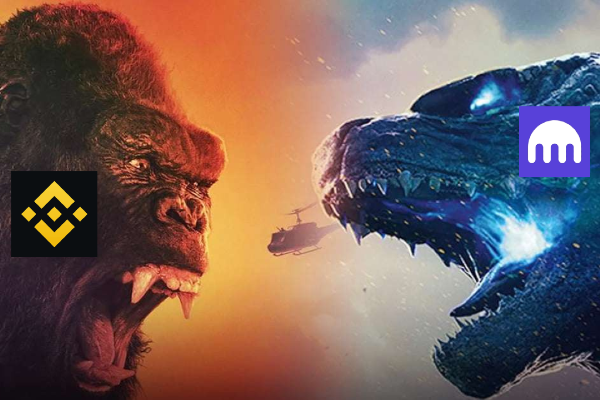
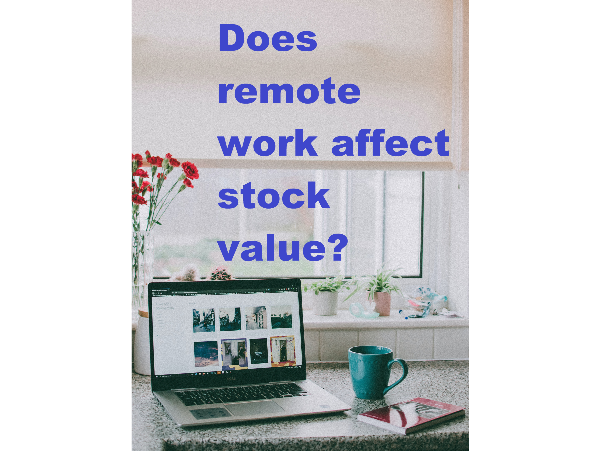
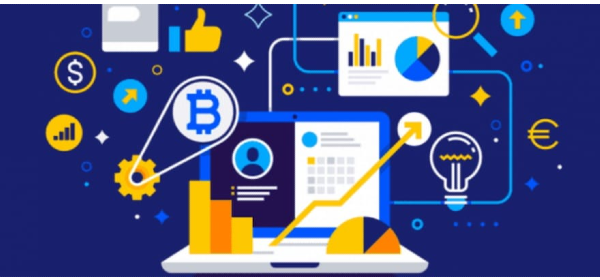

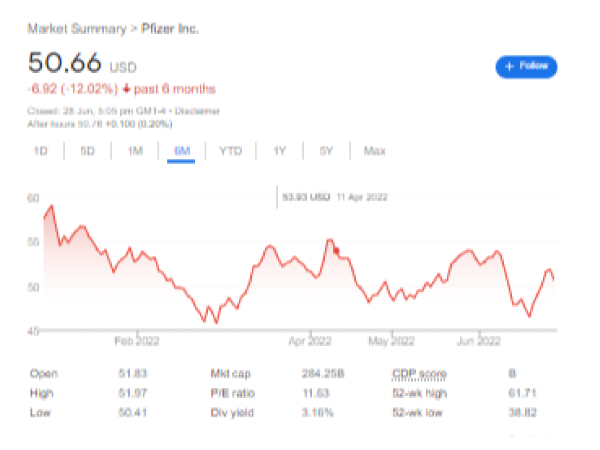
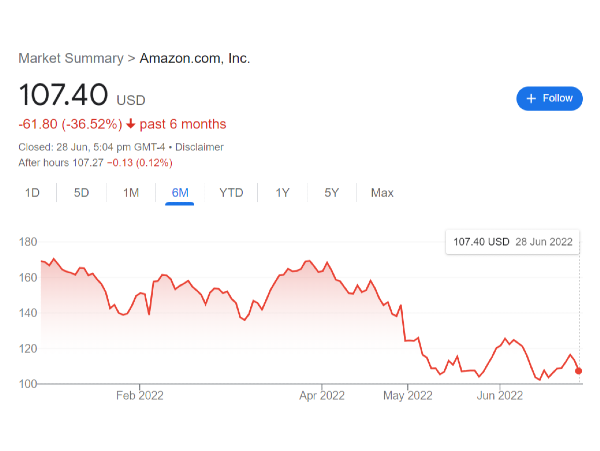











Keeping up with and adapting to the current trends can be tricky, but it is vital in our ever-changing society to remain relevant and productive. For those who are still trying to get their heads around Web 3.0 and wondering what all the fuss is about, we've put together a fascinating update on internet development and the next web phase to help you understand.
The whole thing started last month when Twitter founder Jack Dorsey took to his Twitter and wrote, “this will likely be our most important contribution to the internet. proud of the team,” accompanied by the hashtag #web5. This was a quote to another tweet from Dorsey’s TBD—the Bitcoin business unit of Block, which unveiled the concept with an attached Google Docs document containing slides with more information for public viewing.
This was, however, not the first news of this development; TBD had previously announced its plan to build a decentralized layer on the internet called “Web5” during the Consensus Festival, which was hosted in Austin, Texas, by cryptocurrency news agency, CoinDesk. In a statement to CoinDesk at the event, TBD said, “Identity and personal data have become the property of third parties. Web5 brings decentralized identity and data storage to individuals’ applications. It lets devs focus on creating delightful user experiences while returning ownership of data and identity to individuals.” The platform's launch date is still yet to be announced, seeing as it is still in open-source development.
You're probably thinking along the same lines that I did when I first read this statement. “Decentralization” and “individual ownership of data” sound like what the developing web 3.0 was supposed to bring to the web, so what exactly is this new web phase?
What is Web 5.0?
To better understand the concept, let’s do a brief on web 1.0, web 2.0, and web 3.0.
Web 1.0 was the first generation of the web, also known as the "read-only" web, and consisted of static web pages that served only informational purposes.
Web 2.0 is the “read-write” web that led to the creation of the social web, allowing users to communicate with servers and other users.
Web 3.0 refers to the "read-write-execute" web; a developing phase focused on web decentralization via blockchain technology, artificial intelligence, and machine learning.
Web 5.0 is an “extra” decentralized web that is being built with the aim of allowing users fully own their data and control their identity. With web 5.0, individual developers will be able to create decentralized web apps with verified credentials and decentralized web nodes using a decentralized web platform. The web, when fully developed will be characterized by two main elements; Data ownership and identity control.
Data Ownership
This web phase will allow individuals to store their data on a decentralized web node rather than centralized corporations or third-party applications, giving the user complete control over personal data access or denial by applications. Allowing access allows this stored data to be used to provide settings and preferences to the app, resulting in personalized web experiences across applications.
Identity Control
Another use case is that user data, such as preferences, settings, and items, as well as identity data, such as name, personal contact information, pictures, gender, and nationality, will be safely stored and managed in a digital wallet, which the user can authorize for connections with other devices and applications to maintain a consistent web identity.
The combination of these two characteristics will result in a combination of web 2.0 and web 3.0 to create a read-write-execute-emotive or read-write-execute-symbiotic web that employs emerging technology such as Bitcoin blockchain, artificial intelligence, and machine learning to create an internet that can interpret metadata using 'emotion' and logic. This interpretation can then be used to make precise predictions and recommendations tailored to the user's needs and requirements.
Web 5.0 vs. Web 3.0
If you don't look too closely, Jack Dorsey's version of web 5.0 looks a lot like web 3.0. This is because Dorsey has not been silent in his disapproval of VCs—Venture Capitals who organize funding rounds for dApps and web3 projects. He holds the opinion that the current web3 model is a faux or partial decentralization, with VCs retaining significant control over user data.
This opinion was reiterated in his response to a Twitter user who asked if web3 was not decentralized enough that there would be a need for web5. “it’s basis on single point of failure systems (eth, solano, *) and lies being told to people about who owns and controls it,” Dorsey responded. He also added “RIP web3 VCs” to his tweet that announced web5. As a result, when web 5.0 becomes operational, it will bring total decentralization, with no intermediaries or centralized bodies having access to or control over a user's data.
While this type of attack on blockchains like Eth and Sol is odd given that Jack sold his tweet as an NFT, a web3 concept, it isn't entirely out of character for a bitcoiner like Dorsey, who believes in Bitcoin's legitimacy and supremacy as the leading financial and web solution, thus the development of web5 on the Bitcoin blockchain. This position was echoed by TBD lead Mike Brock who tweeted “Let me clear this up right now, everybody: No. There are no tokens to invest in with web5.”
Another distinction is that, in comparison to web 3.0, web 5.0 will be more individual-focused and user-centered. The new web will be able to use developing web technology and blockchain to respond to users' specific needs, resulting in new and unique web experiences that vary from person to person, and users will be able to utilize their digital wallet to move between apps.
Read Also: Binance vs. Kraken: Which is superior?
Where do we go from here?
The web phase is still in its early stages, with development well underway, and the final product, scope, and adoption remain largely unknown. The announcement elicited a range of reactions, some positive and some negative. Is web 5.0 just a cheap attempt to keep Bitcoin relevant in the developing web? A marketing buzzword with the same application as existing web phases? Or is it a necessary development aimed at internet advancement and customer satisfaction? I suppose time will tell, and we will as well.
Storing your cryptocurrencies in online wallets, exchanges and software wallets exposes you to risks of being hacked. Consider storing them in a hardware wallet today